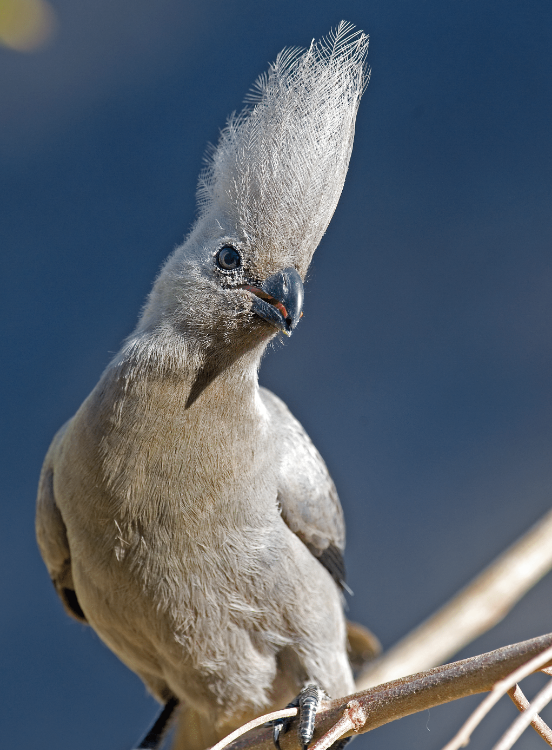Betesda Lodge and Camping
August 28, 2012Camel adventures in Damaraland
August 28, 2012Yellow-billed Oxpecker
Buphagus africanus
Roberts No 771
by Pompie Burger
If you want to see oxpeckers, you must look for animals, or vice versa. Their Latin generic name, Buphagus, literally means ox-eating, and although this looks pretty much like what they’re doing, it’s not the case; they only do their feeding on animals.
Not only do the two different oxpeckers look different; they also have definite preferences when it comes to their restaurants. The Yellow-billed’s favourite ‘oxen’ are the bigger animals, such as hippos, buffaloes and giraffes, while the Red-billed Oxpecker goes for smaller ones, such as impalas and warthogs. They don’t parasitise on carnivores and elephants. Apparently elephants have relatively few parasites on them. They are very sensitive to birds perching on their bodies, and will invariably chase them away.
The oxpeckers are classified with starlings, but they should, in fact, be in their own class, because they are extremely well adapted for their specific lifestyle of feeding on mammals. They have long, stiff tails to help with stabilising and support when sitting down. Their claws are strong and sharp, with curved tips to cling to skin and fur, while their legs are short for clinging close to their subjects. Lastly, their bills are specialised with flattened and pointed tips for scissoring through the fur.
There is obviously a symbiotic relationship between oxpeckers and their hosts, so much so that it has been estimated that animals tolerating oxpeckers can reduce their grooming activities by up to 30%. Their presence also alerts the animal to the presence of predators and dangerous photographers. It is uncertain to what extent their presence helps with wound healing. On the one hand they do clean wounds, but their constant presence might also inhibit natural healing.
The status of these birds is vulnerable. Until a few years ago they were on the brink of extinction because of the use of arsenic dip in cattle-dip pesticides. Fortunately they have been successfully reintroduced in some protected areas. The Yellow-billed Oxpecker occurs in the Caprivi and along the Kunene River.
About the author:
Based in Windhoek, Pompie Burger is an orthopaedic surgeon whose part-time passion is photography, in particular wildlife, and specifically birds. This regularly takes him to the most remote corners of the country, resulting in riveting images and articles.
Pompie is the author and photographer of the coffee table book Birds of Namibia, which was published in 2008. The book contains articles and photographs which attest to the insight and knowledge of an accomplished observer.
Read more of his articles in our Birding Section.
This article appeared in the Dec ‘11/ Jan ‘12 edition of Travel News Namibia.


